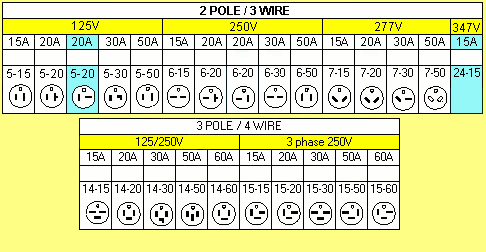Hi, I'm looking for some advice from you American guys about power outlets in the US.
Over here in the UK our electricity is 240V AC 50 Hz. In Europe it's usually 230V. I know over your side of the Atlantic it's 110V 60Hz - or is it 115V? I don't know who you blame for this: Edison? Westinghouse? One of the disadvantages of being an early adopter, I suppose.
What I want to know is how do you run larger electrical appliances? For example in every British kitchen you will find an electric kettle (we like our tea). Usually rated at 3kW. This draws about 13A from the power outlet here.
A similar appliance running from 110V will draw 27A! I have seen your little 2-pin plugs and I don't know what current they are rated at but I wouldn't like to put more than 10A through them. 27A will probably start a fire! I don't know if you have kettles but you must have heaters, dishwashers, vacuum cleaners, washing machines, etc. How do you do it?
I have heard that you can use an extra phase giving you 220V for high-power appliances. How common is this? Does every house have both types of outlets?
I ask this because the company I work for are producing a piece of equipment which is now going to be sold worldwide. It consumes about 2kW. Do we make it for 220V or 110V? What standard connectors do you use?
Actually, this equipment will normally be used in a laboratory environment. Same outlets there? What type of connectors? Part numbers?
Thanks for your help.
Over here in the UK our electricity is 240V AC 50 Hz. In Europe it's usually 230V. I know over your side of the Atlantic it's 110V 60Hz - or is it 115V? I don't know who you blame for this: Edison? Westinghouse? One of the disadvantages of being an early adopter, I suppose.
What I want to know is how do you run larger electrical appliances? For example in every British kitchen you will find an electric kettle (we like our tea). Usually rated at 3kW. This draws about 13A from the power outlet here.
A similar appliance running from 110V will draw 27A! I have seen your little 2-pin plugs and I don't know what current they are rated at but I wouldn't like to put more than 10A through them. 27A will probably start a fire! I don't know if you have kettles but you must have heaters, dishwashers, vacuum cleaners, washing machines, etc. How do you do it?
I have heard that you can use an extra phase giving you 220V for high-power appliances. How common is this? Does every house have both types of outlets?
I ask this because the company I work for are producing a piece of equipment which is now going to be sold worldwide. It consumes about 2kW. Do we make it for 220V or 110V? What standard connectors do you use?
Actually, this equipment will normally be used in a laboratory environment. Same outlets there? What type of connectors? Part numbers?
Thanks for your help.







